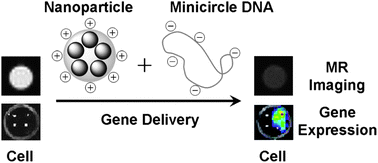Tracking the distribution of stem cells (SCs) in tissue engineered organ scaffolds is of great importance in order to understand the role, movement and distribution of SCs after they have been implanted. A recent minireview, by Hachani et al. at University College London, highlights the recent application of nanotechnology in SC labeling and magnetic resonance imaging (MRI).
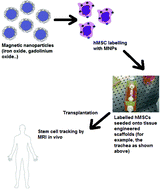
For researchers wishing to gain an insight into the application of nanotechnology in MRI and stem cell research, this review provides a valuable starting point for becoming familiar with recent developments in this area.
By Lee Barrett
You can read this Minireview in Nanoscale by clicking the link below:
Tracking stem cells in tissue-engineered organs using magnetic nanoparticles
Roxanne Hachani, Mark Lowdell, Martin Birchall and Nguyễn Thi Kim Thanh
DOI: 10.1039/C3NR03861K, Minireview











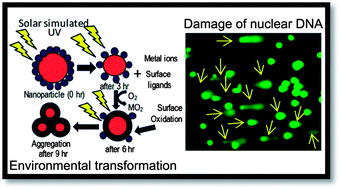 To evaluate the toxicity, the researchers induce the breakdown of the nanomaterials by exposing them to simulated solar UV light. This releases Cd2+ and Zn2+ ions for the QDs and NPs, respectively, which were then detected by measuring the quenching of the fluorescence signal in the presence of tetrakis (4-carboxyphenyl) porphyrin (TCPP) or by measuring the enhancement of the fluorescence signal in the presence of the commercial Measure iT Pd/Cd sensor.
To evaluate the toxicity, the researchers induce the breakdown of the nanomaterials by exposing them to simulated solar UV light. This releases Cd2+ and Zn2+ ions for the QDs and NPs, respectively, which were then detected by measuring the quenching of the fluorescence signal in the presence of tetrakis (4-carboxyphenyl) porphyrin (TCPP) or by measuring the enhancement of the fluorescence signal in the presence of the commercial Measure iT Pd/Cd sensor.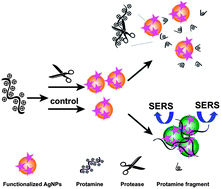 This method is based upon the anti-aggregation of silver nanoparticles (AgNPs), resulting in a reduced SERS signal in the presence of trypsin. The authors functionalized AgNPs with protamine, a low molecular weight protein, which adsorbs to the negatively charged AgNP surface via electrostatic interaction of the polycationic arginine residues abundant in the protein. Adsorption of protamine resulted in AgNP aggregation due to the neutralization of the negative charge on the NP surface. This resulted in an increase in the SERS signal of a Raman reporter molecule, 4-mercaptopyridine (4-MPY), adsorbed on the NP surface.
This method is based upon the anti-aggregation of silver nanoparticles (AgNPs), resulting in a reduced SERS signal in the presence of trypsin. The authors functionalized AgNPs with protamine, a low molecular weight protein, which adsorbs to the negatively charged AgNP surface via electrostatic interaction of the polycationic arginine residues abundant in the protein. Adsorption of protamine resulted in AgNP aggregation due to the neutralization of the negative charge on the NP surface. This resulted in an increase in the SERS signal of a Raman reporter molecule, 4-mercaptopyridine (4-MPY), adsorbed on the NP surface.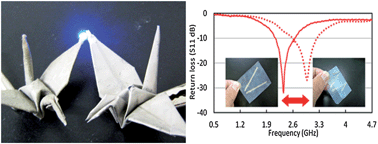
 The lys-dex conjugates were spherical in shape with a hydrodynamic radius of 200 nm. Due to the stability of the lys-dex nanogels against changes in pH and ionic strength, in addition to the net positive charge of the lys core produced at pH < 10.7, the nanogels are a suitable substrate for the synthesis of gold nanoparticles.
The lys-dex conjugates were spherical in shape with a hydrodynamic radius of 200 nm. Due to the stability of the lys-dex nanogels against changes in pH and ionic strength, in addition to the net positive charge of the lys core produced at pH < 10.7, the nanogels are a suitable substrate for the synthesis of gold nanoparticles.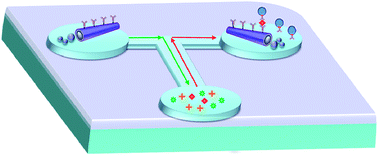 In this
In this 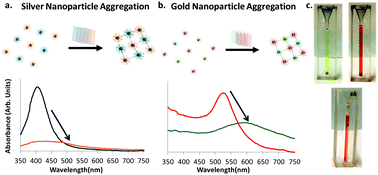 The BA-conjugated silver and KSHV-conjugated gold nanoparticles were combined in a single tube and aggregation of the nanoparticles was induced by addition of complementary DNA. Addition of BA complementary DNA resulted in a red-coloured solution associated with unaggregated gold nanoparticles, while the addition of KSHV complementary DNA resulted in a yellow-orange solution associated with unaggregated silver nanoparticles. The sensitivity of the assay was 2 nM and 1 nM complementary DNA for gold and silver nanoparticle conjugates, respectively.
The BA-conjugated silver and KSHV-conjugated gold nanoparticles were combined in a single tube and aggregation of the nanoparticles was induced by addition of complementary DNA. Addition of BA complementary DNA resulted in a red-coloured solution associated with unaggregated gold nanoparticles, while the addition of KSHV complementary DNA resulted in a yellow-orange solution associated with unaggregated silver nanoparticles. The sensitivity of the assay was 2 nM and 1 nM complementary DNA for gold and silver nanoparticle conjugates, respectively.